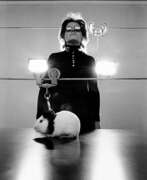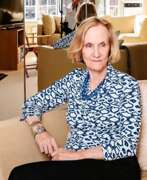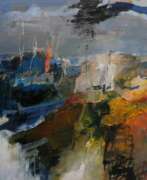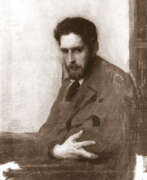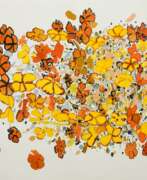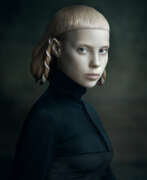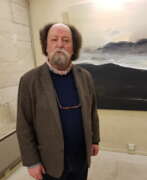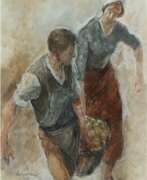Portraitist 21st century


Alexander Grigorievich Maksymenko (Russian: Александр Григорьевич Максименко) was a Soviet and Ukrainian painter of the second half of the twentieth and early twenty-first centuries. He is known as a painter, graphic artist, watercolorist, and art historian.
Alexander Maksymenko worked in the genres of still life, landscape, portrait, as well as in genre painting. His genre works cover themes of collective farm life, including "Masters of the Land" and "Innovators of Collective Farm Fields". For the latter work he received the Stalin Prize. The master actively participated in exhibitions in Ukraine and abroad. His works are in the National Art Museum of Ukraine, the Museum of the History of Ukraine in World War II, as well as in other art museums and private collections.


Herbert Ritts Jr. was an American fashion photographer and director known for his photographs of celebrities, models, and other cultural figures throughout the 1980s and 1990s. His work concentrated on black and white photography and portraits, often in the style of classical Greek sculpture, which emphasized the human shape.




Victor Ashotovich Abramyan (Russian: Виктор Ашотович Абрамян) was a Soviet and Russian artist of the second half of the twentieth and early twenty-first centuries. He is known as a painter, a representative of the Leningrad school.
Victor Abramyan created portraits, landscapes, still lifes and genre paintings. He participated in exhibitions from the early 1970s in Leningrad. Among his famous works are "Blockade everyday life", "Still Life with a Centennial", "Leningrad. 1942. Women on Guard in the besieged city", "Young Guests" and others.
Abramyan's works are in museums and private collections in Russia and many other countries.


Angelo Accardi is a contemporary Italian artist. He grew up surrounded by both modern and traditional art. Although he studied fine art at the Art Academy of Naples, he never completed his training. Angelo Accardi illustrates surreal visions of everyday life under realistic backdrops of urban and natural landscapes. There is never a single meaning, but a whole story behind each painting. Ironic, striking, and playful, Accardi’s unique perspective and avant-garde style is a result of his diverse inspirations.


John Ronald Craigie Aitchison was a Scottish painter. He was best known for his many paintings of the Crucifixion, one of which hangs behind the altar in the chapter house of Liverpool Cathedral, Italian landscapes, and portraits (mainly of black men, or of dogs). His simple style with bright, childlike colours defied description, and was compared to the Scottish Colourists, primitivists or naive artists, although Brian Sewell dismissed him as "a painter of too considered trifles".
His career-long fascination with the crucifixion was triggered by a visit to see Salvador Dalí's Christ of St John of the Cross in 1951 after it was acquired by the Kelvingrove Gallery.


Vladimir Ivanovich Akulov (Russian: Владимир Иванович Акулов) is a Soviet and contemporary Belarusian artist. He is known as a painter, graphic artist and teacher, a representative of the second wave of Belarusian avant-garde.
Vladimir Akulov in his work has developed a unique style under the influence of expressionism, cubism, primitivism, fauvism. He is a master of portrait, landscape, still life, compositions with symbolic and allegorical subjects, illustrations of literary works. During his career the artist created several cycles of portraits, including those of famous people.


Tamam Al-Akhal is a Palestinian artist and educator living in Jordan. She studied at the Fine Arts College in Cairo. From 1957 to 1960, she taught art at the Makassed Girls College in Beirut. In 1959, she married Ismail Shammout. Al-Akhal has exhibited in Egypt, Lebanon, Jerusalem, Jordan, the United States, Kuwait, England, China, Morocco, Berlin, Paris, Rome, and Vienna. She gave a series of lectures at the Jordan National Gallery of Fine Arts in 2009. Her art appeared on more than a dozen covers of Palestinian Affairs, a magazine published by the Palestine Liberation Organization. She was also head of the PLO's Arts and Heritage section. With her husband, she painted a series of large murals known as "Palestine: The Exodus and the Odyssey."




Ismail Al-Sheikhly is a contemporary Iraqui artist. He belonged to one of the first art groups to appear in Iraq, 'La Societe Primitive', founded in 1950. The group later changed its name to 'The Pioneers' and kept it into the 1970s. Some of his works are influenced by Cubism, a movement which grew in popularity throughout the 1950s, and was the preferred artistic style of one of Al-Sheikhly's important contemporaries, Hafiz Drubi. Al Sheikhly’s early works are inspired by the Iraqi village life, though his later works are more focused on abstracted colour combinations and obscured backgrounds. Women feature highly as a central theme in his work. Painted in groups quite often, Al Sheikhly’s women are streamlined with oval faces and generic bodies and seem to always be in states of coming and going, whether that be to the mosque, to the souks, or to do some domestic task.


Manuel Álvarez Bravo was an Mexican visionary photographer whose work vividly illustrates the cultural heritage of Latin America. His unique perspective on life and superb photographic skills have inspired generations of photographers around the world.
Alvarez Bravo was known for his experiments with light and shadows, composition and form. His surreal photographs were often full of mystery and enigma, while also reflecting the difficulties and contradictions of Mexican society in the first half of the 20th century.
Alvarez Bravo's work marvellously combined aesthetic beauty with profound social context. His work is not only inspiring in its beauty but also a reminder of the importance of preserving peoples' cultural heritage and history.
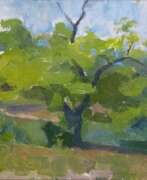



Roby Dwi Antono is a visual artist mainly creating surrealistic paintings as well as sculptures and prints. His work opens a portal to another universe where spaceships, aliens, dinosaurs and creatures with humanly features come together. These surrealistic creations that once lived only in Dwi Antono’s imagination come to life in a new realm on his canvas. Inspired by his childhood memories and love for Fiction movies, his paintings are left for the viewer to interpret.


Kurt Ard was a Danish illustrator, painter and printmaker. He became internationally famous for his narrative cover artwork published in popular magazines of the 1950s-1970s, including the Family Journal, the Saturday Evening Post and Reader’s Digest. Ard started his career at various smaller newspapers and worked in the same realistic tradition as his role model, illustrator and painter, Norman Rockwell. During WW II, Kurt struggled to fulfill commission orders. His painting and his reputation and success grew steadily in the post war years. His illustrations soon appeared in major European publications, and he subsequently achieved international fame. Over the course of his career, Ard has sold more than 1000 illustrations to the best magazines in Europe, and to American publications such as McCalls, Good Housekeeping and Redbook. Today, Kurt continues to create exceptional figurative, landscape and seascape paintings with uncompromising authenticity , capturing the charm, beauty and power of these diverse subjects. His work is especially notable for its brilliant light and precise detail.


Ugo Attardi was an Italian painter, sculptor and writer. Attardi moved from Genoa to Rome in the early 1950s, where he formed the group Forma 1 together with other artists. His sculpture of Ulysses is now permanently installed in Battery Park in New York


Richard Avedon was an American photographer and artist known for his iconic portraits and fashion photography.
Avedon began his career as a photographer in the late 1940s, working as a freelance photographer for magazines such as Harper's Bazaar and Vogue. He soon became known for his distinctive style, which was characterized by his use of simple, uncluttered backgrounds and his ability to capture the essence of his subjects.
Throughout his career, Avedon photographed some of the most famous people of his time, including Marilyn Monroe, Andy Warhol, and The Beatles. He was also known for his fashion photography, and his work appeared in many fashion magazines, including Harper's Bazaar and Vogue.
Avedon's work was often controversial, as he challenged traditional notions of beauty and fashion. He was known for his willingness to push boundaries, and his work was often seen as a reflection of the social and political issues of his time.
Today, Avedon is regarded as one of the most important photographers of the 20th century, and his work continues to inspire artists and photographers around the world.


Irina Mikhailovna Baldina (Russian: Ирина Михайловна Балдина) was a Soviet and Russian artist of the second half of the twentieth and early twenty-first centuries. She is known as a painter, a representative of the Leningrad school.
Irina Baldina participated in exhibitions in Leningrad since 1952. Her work covered a variety of genres, including portraits, landscapes, still lifes and genre compositions. From 1960 to 1980, her works were characterized by themes of modernity, nature and people of Zaonezhye. Her style was characterized by broad brushstrokes, decorative and mastery in conveying the colors of northern nature.
Her works are in museums and private collections all over the world, including Russia, France, USA, Japan and other countries.


Mike Bayne is a contemporary Canadian artist creates miniature Photorealist paintings of overlooked North American scenes, frequently of his childhood town. Capturing every detail from his working photographs, he replicates his subject not only in terms of imagery, but often also in scale, by mimicking the size of actual commercially printed photographs. His depictions of architecture and vehicles render environments locked in a moment of time, devoid of people and movement. Visually, his works are at once abruptly realistic, and yet purposefully inorganic. He received his MFA from Concordia University and has participated in many group shows across the U.S. and Canada. His work is in the collection of the National Gallery of Canada, the Art Gallery of Ontario, the Nerman Museum etc. Bayne was also the recipient of the Kingston Prize for Portraiture in 2011.


Peter Hill Beard was an American artist, photographer, diarist, and writer who lived and worked in New York City, Montauk and Kenya. His photographs of Africa, African animals and the journals that often integrated his photographs, have been widely shown and published since the 1960s.


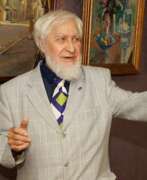

Yuri Vladimirovich Belov (Russian: Юрий Владимирович Белов) was a Soviet and Russian artist of the second half of the twentieth and early twenty-first centuries. He is known as a painter, a representative of the Leningrad school, who worked in the genres of portrait, landscape, still life and historical painting.
Yuri Belov actively participated in exhibitions since 1954. In 1960-1980 the main theme of his work was the images of Lenin and the history of the revolutionary movement. The artist's manner evolved from strict objectivism to a more decorative and impressionistic style.
The master's works are in museums in Russia, France, the USA, Germany and other countries, as well as in private collections.




Arne Besser is a contemporary American artist. He received training as an artist at the Art Center School, Los Angeles. There he studied with John Audubon Tyler and Lorser Feidelsson. Beser’s approach to Photo-Realism is to draw from the urban landscape and nature a succinct “set like” image of reality. His city scenes depict New York street life alive with trading and traders, prostitutes and junkies looking for a fix. These visual images iconify the underside of urban life in a way that elevates this point of view to an almost mythic level.
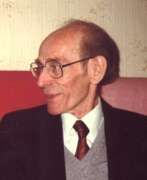

Boris Georgievich Birger (Russian: Борис Георгиевич Биргер) was a Soviet artist of the second half of the twentieth century of Jewish origin. He is known as a portrait painter, a representative of "unofficial art", a follower of symbolism.
Boris Birger developed his individual style of portrait painting, recognizable by his colorism. He often portrayed representatives of the liberal creative intelligentsia and was twice expelled from the Union of Artists of the USSR because of his criticism of official cultural policy.
In the 1970s his work was recognized abroad, especially in Germany, and from 1990 he lived in that country.




Otmar Blaser is a contemporary German artist. In 1967 he studied at the Werkkunstschule with Prof. Holweck. In 1968 he traveled through Europe, the Middle East, Canada and America. From 1970-1976 he studied at the University of the Arts in Berlin. In 1975 he was a master's student with Professor Bachmann, in 1976 he was an assistant to Professor Kapitsky at the Institute of Visual Communication and Design. In 1977 he was a lecturer at the Volkshochschule Berlin-Neukölln, collaborating freelance with the Theatertreffen Berlin.


Olga Borisovna Bogayevskaya (Russian: Ольга Борисовна Богаевская) was a Soviet and Russian artist of the second half of the twentieth century. She is known as a painter, graphic artist, teacher, and representative of the Leningrad school.
At the beginning of her career, Olga Bogayevskaya taught painting at the Secondary Art School of the Leningrad Institute of Painting, Sculpture and Architecture and participated in exhibitions. Her works, notable for their uncommon colorism, included children's portraits, interior and exterior still lifes. In 1950-1960 she was already considered one of the leading artists of Leningrad.
Her works are in many museums and private collections around the world, including the State Russian Museum and the State Tretyakov Gallery. Bogayevskaya also exhibited successfully abroad, including France.


Francois Boisrond is a contemporary French painter. He studied from 1977 to 1980 at the National School of decorative Arts. In 1981 he became involved in the Free Figuration movement. Inspired by visual products (advertising products, posters, stickers, video games etc.), cartoon characters, and by using acrylic paint, Francois Boisrond’s works are colourful, figurative and enigmatic, and his simplified shapes are often outlined in black. He portrays mainly characters, frequently symbolic in everyday situations, but he also depicts urban, maritime or rural landscapes. Besides this Boisrond creates humanitarian and publicity posters. Since the 1990’s the artist has become interested in an imaginary public and the everyday life that invades each and every one of us.
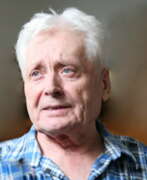

Vasily Pavlovich Borisenkov (Russian: Василий Павлович Борисенков) was a Soviet and Russian artist of the second half of the twentieth and early twenty-first centuries. He is known as a painter and teacher, a representative of the Leningrad school of painting.
Vasily Borisenkov actively participated in Leningrad art exhibitions since 1954, was the author of genre and battle paintings, landscapes and portraits. Among his famous works are the paintings "Difficult Conversation", "Spring", "Strelna. The Beginning of Summer" and many others. The master's works are in museums and private collections both in Russia and abroad.
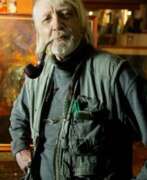

David Fielding Gough Boyd was an Australian artist, and a member of the Boyd artistic dynasty.
In 1946, he worked with his brother Guy at the Martin Boyd Pottery in Sydney. He also established a pottery studio in London in the early 1950s and continued working mainly in pottery through to the mid-1960s. In 1956, Boyd and his wife became widely known as leading Australian potters. They introduced new glazing techniques and potter's wheel use in shaping sculptural figures.
Boyd's painting career began in 1957 with a series of symbolic paintings on Australian explorers that aroused much controversy at the time, focusing as they did on the tragic history of the Aboriginal Tasmanians. In 1958 he exhibited a series of paintings based on the histological episodes in the explorations of Burke and wills and Bass and Flinders.[3] He joined the Antipodeans Group in the 1950s. Boyd discovered a technique in 1966 that he named Sfumato, after da Vinci's usage of the word to describe graduations of smoky tones in painting. Boyd's method achieved this effect through a new technique involving candle flame.


Jason Brooks is a contemporary British artist known for his fashion illustrations and portraits. He was born in 1969 and studied at Chelsea School of Art and Central Saint Martins in London. His work has been published in publications such as Vogue, Elle and The New Yorker.
Jason Brooks has worked with fashion brands including Chanel, L'Oreal and Christian Dior. As well as commercial work, he has exhibited his work in galleries around the world, including the Saatchi Gallery in London and the Museum of Modern Art in Tokyo.


James Brown was an American-born painter active in Paris and Oaxaca, Mexico. He was most well known in the 1980s for his rough painterly semi-figurative paintings, bearing affinities to Jean-Michel Basquiat and East Village painting of the time, but with influences from primitive art and classical Western modernism. His work has taken on several styles over the years but maintains a hand-made look combining concerns of the modernist tradition with motifs and spiritual interests from tribal art. Much of his work is a non-realistic but contains depictions or signs of recognizable faces or objects. However, the line between representation and abstraction is often a difficult one in his work. Besides paintings Brown has also produced sculptures and series of prints at various points in his career, and in the 1990s started to heavily utilize collage.


Zlata Nikolaevna Byzova (Russian: Злата Николаевна Бызова) was a Soviet and Russian artist of the second half of the twentieth and early twenty-first centuries. She is known as a painter, a representative of the Leningrad school, famous for her genre compositions, portraits, landscapes and studies from life.
Zlata Byzova achieved particular success in provincial portrait-types and Old Ladoga sketches of the 1960s-1970s. Her works were successfully presented at exhibitions and auctions of Russian painting in France in 1989-1992.
The artist's works are in museums and private collections in Russia, Finland, Germany, France and other countries.


Thomas Calloway Lea III was an American muralist, illustrator, painter, war correspondent, writer and historian. Much of his fiction and literary work has focused on Texas, north-central Mexico, and his World War II experiences in the South Pacific and Asia. Two of his most popular novels, The Brave Bulls and The Wonderful Country, are considered classics of Southwestern American literature.






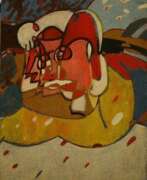

Pierre Courtens is a French painter of Belgian origin. In 1942 he entered the Academy of Fine Arts of Saint-Josse-ten-Noode, having as a teacher the painter Jacques Maes. He also studied monumental decorative art at Anto-Carte, took courses at the Higher Academy of the Kingdom of Belgium in Antwerp in etchings and woodcuts (Cours Broccas). He is particularly famous for the portraits he made of Antonin Artaud, whom he met in 1946.


Ray Austin Crooke was an Australian artist known for for serene views of Islander people and ocean landscapes, many of which are based on the art of Paul Gauguin. He won the Archibald Prize in 1969 with a portrait of George Johnston. His painting The Offering (1971) is in the Vatican Museum collection. Many of his works are in Australian galleries. He was made a Member of the Order of Australia in the 1993 Australia Day Honours, "in recognition of service to the arts, particularly as a landscape artist".


Ronnie Cutrone was an American pop artist known for his large-scale paintings of some of America's favorite cartoon characters, such as Felix the Cat, Pink Panther and Woody Woodpecker. Cutrone's paintings are colorful, lively, and less challenging than those of his contemporaries. As Andy Warhol's assistant at the Factory atop the Decker Building from 1972 until 1980, Cutrone worked with Warhol on paintings, prints, films, and other concepts, eventually co-opting Warhol's earliest work (pre-1960) as well as works by Roy Lichtenstein and others, until finally distilling those myriad influences into the style a few critics eventually labeled "Post-Pop". Together with Kenny Scharf, Cutrone revived the comic strip in painting. By using established comic characters such as Woody Woodpecker and Felix the Cat, Cutrone rephrased themes of originality and authorship, and of low-brow taste and fine art which makes him directly indebted to Pop Art of early Sixties.


Robert Henry Dickerson was an Australian figurative painter and former member of the Antipodeans group of artists. Dickerson is one of Australia's most recognised figurative artists and one of a generation of influential artists who include Ray Crooke, Charles Blackman, Laurence Hope, Margaret Olley and Inge King. Dickerson was a self-taught artist who refused to go to art school. His art has been described as angular and high contrast chiaroscuro and executed in a range of materials including paint, pastels, charcoals and other graphic media. The inspiration for his art came from everyday life and he drew on the themes of loneliness, vulnerability and isolation. Lone characters with long noses and whimsical, often averted eyes featured heavily of his work.


Philip-Lorca diCorcia is an American photographer and artist. He is known for his staged and cinematic photographs that often blur the line between reality and fiction.
DiCorcia's work is characterized by his use of elaborate sets and lighting, which he uses to create images that are both beautiful and unsettling. Many of his photographs feature everyday people in staged settings, and he often uses strangers as his subjects, adding to the sense of mystery and voyeurism in his work.
DiCorcia has been the recipient of numerous awards and his work has been exhibited in galleries and museums around the world. He has also been commissioned to create photographs for a wide range of clients, including fashion magazines and advertising campaigns.
DiCorcia's legacy as an artist and photographer continues to influence new generations of artists. His innovative techniques and approach to photography have helped to redefine the medium and have had a significant impact on contemporary art and culture.


Georg Dinz is a contemporary Austrian artist. After studying at the Vienna University of Applied Arts, Dienz lives and works as a room and stage designer in the Viennese punk scene. Shortly after the fall of the Wall, Dienz moves to Berlin, where he takes part in various art projects in the wild post-reunification period. Today he concentrates on free painting in his studio in the former Berlin artist district of Prenzlauer Berg. Georg Dienz's works are stylistically characterized by a flat and clear application of paint and can be described as "reduced realism".
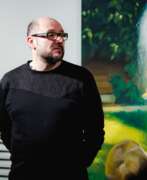

Vladimir Efimovich Dubosarskii (russian: Владимир Ефимович Дубосарский) is a Russian artist. From 1994 to 2014 he worked in an art duo with Aleksandr Vinogradov (russian: Александр Виноградов).
He studied at the Moscow Art College in memory of 1905, then at the Moscow State Art Institute named after V. I. Surikov. Since 1994, a member of the MOSKh, corresponding member of the Russian Academy of Arts.


Jeanne Dunning is an American photographer whose work is centered around corporeality and human physicality in abstract forms. Dunning earned her Bachelor of Arts from Oberlin College and her Masters of Fine Arts from The School of the Art Institute of Chicago. From there, she opened her first exhibit at the Feature Gallery in Chicago in 1987. In the early 1990s, Dunning created a series of photographs for an exhibit titled "Directions" which was meant to blur the lines of fact and fiction.The exhibit was displayed at the Hirshhorn Museum in Washington. Dunning's work is included in the permanent collections of the Art Institute of Chicago, the Whitney Museum of American Art, the Museum of Contemporary Art, Chicago, the Museum of Contemporary Photography and the Museum of Modern Art, New York.


Marcel Dzama is a contemporary artist from Winnipeg, Manitoba, Canada who currently lives and works in New York City. His work has been exhibited internationally, in particular his ink and watercolor drawings. Dzama works extensively in sculpture, painting, collage, and film. The artist is also known for his intricate dioramas and large scale polyptychs that draw from his talents across a range of media. Dzama works in multiple disciplines to bring his cast of human figures, animals, and imaginary hybrids to life, and has developed an international reputation and following for his art that depicts fanciful, anachronistic worlds.




Simon English is a contemporary british artist. He is best known for his large and small-scale 'painted drawings' in which he mingles his distinctive imagery and words. He moves lightly between tight draftsmanship and a playfully sloppy application of colour and line. Language is paramount with diaristic musings interspersed with song lyrics, poetry and humorous one-liners. Self-described as 'automatic', his work has the spontaneity of stream-of-consciousness, exploring themes of love and loss, as well as gay and popular culture. Simon English lives and works in London. He emerged on the London Art scene in 1994 with an exhibition of paintings at the Saatchi Gallery as part of Young British Art III. Simon has exhibited internationally at numerous institutions.


Albert Ennemoser is a contemporary Austrian artist. Traveled extensively throughout Europe, USA, Africa and Asia. In 1972 he immigrated to Ireland, then moved to Scotland. He studied painting at the Glasgow School of Art and Jordanhill College of Education. Worked as an illustrator for BBC-TV-Scotland and as a designer for NAEF in Switzerland. He received several awards and was artistic director of the Tiroler Literaturwettbewerb für Jugendliche. His work has been exhibited both nationally and internationally.


Erro, real name Guðmundur Guðmundsson, is a contemporary Icelandic painter.
Erro studied painting at the Reykjavik and Oslo Art Academies between 1952 and 1954. He then moved to Italy, where he studied mosaic art in Florence and Ravenna until 1958.
Erro participated in the Venice Biennale in 1986. In 1989 he donated a large part of his works to the Reykjavik Art Museum.
The style of the paintings created by Erro lies on the border between surrealism and pop art. The main theme of his paintings is the depiction of modern civilisation, its technical perfection and its inhumanity. He also uses comic book techniques and science fiction themes in his work.


Hamed Ewais is an egyptian artist. Ewais graduated from the Cairo’s School of Fine Arts in 1944, later he continued his studies at the Royal Academy of Fine Arts of San Fernando in Madrid, returning to teach at the Faculty of Fine Arts in Alexandria. Ewais was of the founders of the Group of Modern Art in 1947 along with several artists. In 1956, he was awarded the Guggenheim International Prize. Influenced by key figures of Mexican muralism such as Diego Rivera and David Alfaro Siqueiros, Ewais chose to work in an aesthetic style that reflected his socialist political leanings. As one of Egypt’s leading social realist painters, Ewais highlighted the plight of the country’s working class and was a proponent of Nasser’s Pan Arab movement.


Rainer Fetting is a German painter and sculptor.
Rainer Fetting was one of the co-founders and main protagonists of the Galerie am Moritzplatz in Berlin, founded in the late 1970s by a group of young artists (mainly painters) from the class of Karl Horst Hödicke at the former Berliner Hochschule für Bildende Künste (Berlin Art Academy, today known as Universität der Künste). Fetting is now one of the internationally best known contemporary German artists, having created a large oeuvre of expressive figurative paintings covering many different kinds of subject-matter, as well as many bronze sculptures.


Maria Paula Figueiroa Rego was a Portuguese-British visual artist known particularly for her paintings and prints based on storybooks. Rego's style evolved from abstract towards representational, and she favoured pastels over oils for much of her career. Her work often reflects feminism, coloured by folk-themes from her native Portugal.


Michael Fischer-Art, an artist born in Leipzig, takes a socially critical approach to the environment in his art and assigns his work to “market realism”. His pictures are colorful attacks on intellectualism and profundity, while his sculptures are eye-catching eye-catchers that beautify many places in Germany. He also creates pop art-style portraits of celebrities and maintains contacts with representatives from politics, business and show business.
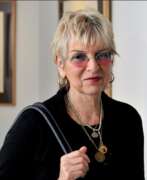

Audrey L. Flack is an American artist. Her work pioneered the art genre of photorealism and encompasses painting, sculpture, and photography. Flack's early work in the 1950s was abstract expressionist. But gradually, Flack became a New Realist and then evolved into photorealism during the 1960s. Audrey Flack is best known for her photo-realist paintings and was one of the first artists to use photographs as the basis for painting.[6] The genre, taking its cues from Pop Art, incorporates depictions of the real and the regular, from advertisements to cars to cosmetics. Flack's work brings in everyday household items like tubes of lipstick, perfume bottles, Hispanic Madonnas, and fruit.[6] These inanimate objects often disturb or crowd the pictorial space, which are often composed as table-top still lives. Flack often brings in actual accounts of history into her photorealist paintings, such as World War II' (Vanitas) and Kennedy Motorcade. Women were frequently the subject of her photo-realist paintings. She was the first photorealist painter to be added to the collection of the Museum of Modern Art in 1966.


Peter Flinsch, a German Canadian artist, began his career as a set designer and art director for Radio-Canada.
He faced challenges during the Nazi era, joining the Hitler Youth and being charged under criminal code Section 175-1 for kissing another man.
After World War II, he worked in theatre and publicity design before settling in Montreal with Radio-Canada for over 30 years. Following his retirement, he exhibited his own artwork and gained recognition online.


LaToya Ruby Frazier is an American visual artist, renowned for her profound work that delves into social justice, cultural change, and the American experience. Born in 1982 in Braddock, Pennsylvania, Frazier utilizes various media, including photography, video, and performance, to explore themes of industrialism, environmental justice, and human rights. Her art, deeply rooted in collaborative storytelling, often portrays her family and community, offering a lens into the lived experiences of working-class families amid societal and environmental challenges.
Her notable series "The Notion of Family" explores her family's life in Braddock, revealing the impacts of industrial decline on the community and environment. This work not only highlights LaToya Ruby Frazier's personal narrative but also serves as a broader commentary on race, class, and the American industrial landscape. Her commitment to social documentation is further exemplified in projects like "Flint is Family," where she immersed herself in Flint, Michigan, to document the water crisis's impact on local families.
LaToya Ruby Frazier's exhibitions span across prestigious venues in the US and Europe, reflecting her influence and recognition in the art world. Her works are part of esteemed collections like The Museum of Modern Art and the Whitney Museum of American Art in New York. Frazier's accolades include a MacArthur Fellowship, demonstrating her significant contributions to contemporary art and social activism.
For art collectors and experts, Frazier's work offers a compelling intersection of art, activism, and storytelling, providing insightful perspectives on pressing social issues through the lens of personal and community narratives.
To stay informed about LaToya Ruby Frazier's work and related updates, including new product sales and auction events, subscribing to updates is a valuable opportunity for enthusiasts and collectors alike to engage with her impactful artistry and advocacy.
